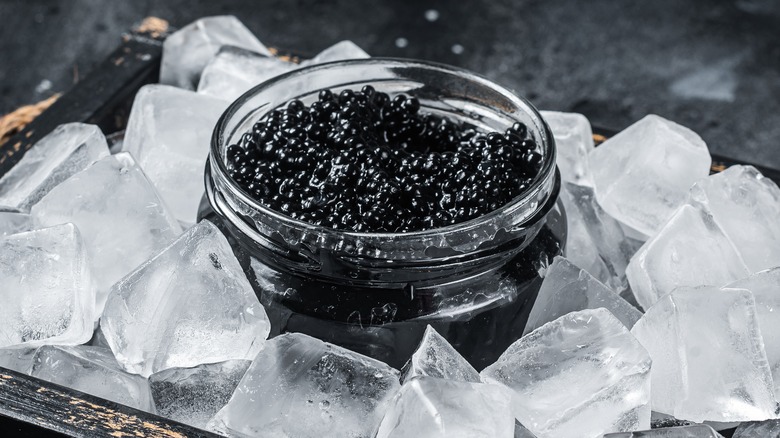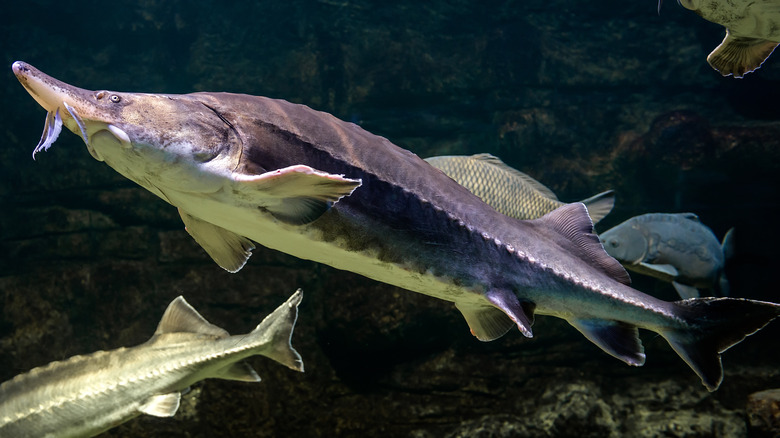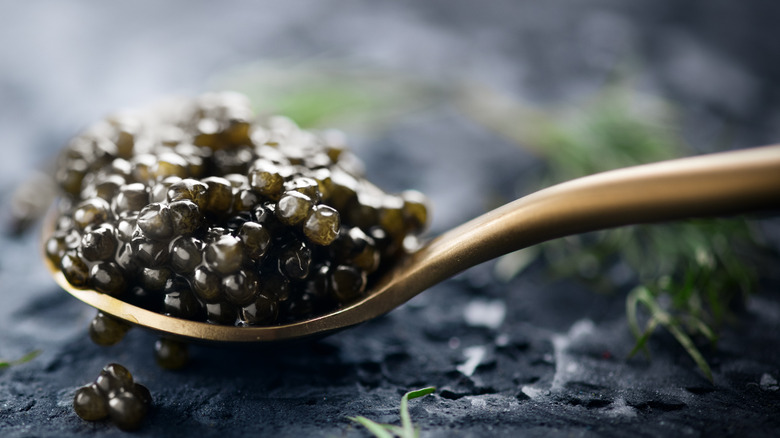Caviar Was Once Considered Peasant Food
Caviar is undoubtedly a luxury food, but that was not always the case. As reported by The Moscow Times, caviar was originally regarded as no more than a simple meal for commoners. While what a society considers to be luxurious is largely based on the available supply of those foods, it is also informed by the quality or even the subjective perception of quality. Consuming luxurious foods demonstrates access to an exclusive social group, according to a study by Marijke Van der Veen at the University of Leicester (via ResearchGate).
In the 12th century, sturgeon, the fish that produce these now sought after eggs, were abundant, and fished like any other. Similar to lobster, as bottom-feeders, sturgeon were not highly-prized, notes Forbes. Fisherman realized that mature female sturgeon were brimming with roe. Not wanting to waste, caviar became a simple fisherman's meal, served plain or with porridge, per Medium. When Ivan the Terrible, the first tsar of Russia, decided he was into caviar, so did the rest of the Russian elite. From the Romanov dynasty and beyond, caviar has remained a delicacy.
Caviar production is a long and detailed process
Though there are many types of consumable fish eggs, these eggs must come from the sturgeon fish to truly be considered caviar. The type of sturgeon, the time it takes for a female to mature enough to produce eggs, the harvesting process, the quality grade of the yield, and of course, supply and demand all contribute to the cost, according to Caviar Star. As they put it, the caviar process plus the caviar rarity equals the resulting price.
The numerous constraints on caviar production are what makes caviar so expensive. It takes a minimum of eight, and up to 20 years for a female sturgeon to mature, and only then can she produce caviar, per Caviar Star. Due to overfishing, sturgeon are endangered, and caviar now almost entirely comes from farm-raised fish. The harvesting and processing of caviar is done exclusively by hand. Beluga caviar is the most expensive with the caviar from Iranian Albino Beluga Sturgeon costing a humble $34,500 dollars for one kilogram. American caviar is typically the most affordable.
The status of caviar as a luxury food has fluctuated
The popularity of caviar moved from Russia to Europe, and prices stayed high. Meanwhile, in the United States, caviar remained very cheap due to the high population of sturgeon. The price of caviar was so low that bars used to give away free caviar as a snack. In the 19th century, seeing an opportunity, German entrepreneur Henry Schacht started selling American caviar to Europeans. However, in an economic twist, that same American caviar began to be sold back to United States consumers. Though labeled as "Russian Caviar," around 90% was actually just good old American caviar (via Medium). The perceived quality of the fake Russian Caviar is what drove that demand, just like how the bowl of caviar-laden peasant porridge was the same quality as what would have been enjoyed at a Russian royal fest.


